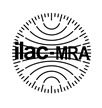Children, whose respiratory systems are still developing, are more susceptible to the adverse effects of air pollutants. Therefore, measuring and monitoring indoor air quality in schools and nurseries should be a priority.
Why is indoor air quality worse for children?
Children of school and pre-school age spend a large proportion of their time indoors.
This means that if indoor air quality is poor due to the presence of pollutants from lack of ventilation, chilren will be exposed to these pollutants for longer periods of time.
Children’s respiratory and inmmune systems are still developing, with narrower airways and smaller lungs compared to adults, and defences that are less able to fight disease and allergies.
These characteristics make it easier for harmful particles to enter the lungs, causing lung damage and breathing difficulties.
In addition, children have a higher metabolic rate than adults, which means that they breath in more and ingest more pollutants in relation to their body size.
Indoor air pollution in schools
Some of the key parameters that can affect indoor air quality in schools are:
- Carbon Dioxide (CO2): high levels of this gas can indicate poor ventilation and consequantly, the accumulation of other pollutants.
- Particulate matter (PM10 and PM 2.5): fine particles in suspension can enter the respiratory system and even reach the alveolar level, causing serious health problems.
- Volatile organic compounds (VOCs): Emissions of chemicals with a high degree of volatility at ambient temperatura from building materials, furniture, cleaning products, etc. can cause respiratory and skin problems.
- Biological pollutants: indoor environments in schools and nurseries are a constant source of viruses and bacteria, as poor air quality caused by lack of ventilation and children’s underdeveloped immune systems favour their spread in an almost continuous cycle.
These pollutant paramenters are further influenced by temperature and relative humidity: temperature, for example, increases the volatilisation of VOCs and favours the proliferation of allergens and bacteria in indoor air, as does relative humidity, thus worsening air quality.
How does air pollution affect learning?
When children in school classrooms are exposed to poor air quality on a daily basis, respiratory problems can be triggered or aggravated, directly affecting their ability to concentrate and perform at school through fatigue, discomfort, headaches and sore throats.
Air pollution also increases the risk of infectious diseases such as colds and flu due to exposure to airborne pathogens, leading to absenteeism from school that affects continuity of learning.
If the indoor environment also has unpleasant odours and a lack of freshness, it creates a sense of discomfort that can distract students and make it difficult for them to concentrate.

How to improve air quality in the classroom? The importance of monitoring
It is clear that indoor air quality in schools is a crucial aspect for the well-being and health of both pupils and teachers.
To improve air quality in classrooms, it is important to have effective ventilation and air conditioning strategies in place, including classrooms in schools and playgrounds.
But how do we know if ventilation and air conditioning are effective in improving indoor air quality?
The only way to do this is to monitor pollutant parameters using indoor air quality devices.
Nanoenvi IAQ is an indoor air quality monitor based on high-resolution IoT sensors and certified by RESET that can measure up to 7 atmospheric parameters: CO2, VOCs, Particulate Matter, CO, Temperature, Relative Humidity and Atmospheric Pressure.
Its configurable alarm system allows the definition of customised alerts that warn when a pollutant exceeds the set thresholds, at which point air quality deteriorates and ventilation strategies need to be implemented.











